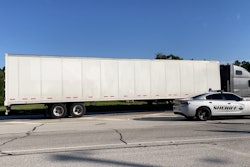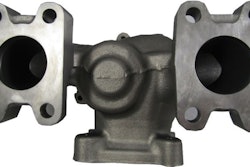
ROADCHECK IS LESS THAN 2 WEEKS AWAY.
If you missed CCJ's AMA with CVSA Inspection Specialist Jeremy Disbrow, click below to receive a recorded version. We received almost 300 questions and this 60 minutes could be a powerful tool in getting and keeping your trucks compliant.
Barring an unforeseen statistical anomaly, brake violations will be among the top equipment out of service violations found during the Commercial Vehicle Safety Alliance (CVSA) International Roadcheck campaign May 14-16.
There has been a shift in recent years toward disc brakes for numerous reasons, ease of maintenance among them, but CVSA Roadside Inspection Specialist Jeremy Disbrow – who joined CCJ, in partnership with Bestpass, for an hour long question and answer session around Roadcheck – said disc brakes are certainly not immune to out of service conditions.
"I don't have any specific data on that right now off the top of my head. I can tell you, (disc brakes) definitely impact the numbers in some ways, but in other ways, it can increase violations," he said. "And what I mean by that is, a disc brake is typically going to have a direct coupled air chamber, so there's no exposed pushrod. So... brake adjustment, those numbers tend to go down, because an inspector can't measure the pushrod travel when there's no pushrod to measure. On the flip side, there's other components that are going to be looked at a little bit more carefully, such as the pads, the rotors, things like that. So while you may see violations in one area go down, if they're not properly maintained, the foundation brake components, we can see more violations of those, like cracks, and things like that."
Disbrow noted that one of the focuses of this year's enforcement blitz ( tractor protection systems) is "a really important brake safety component that they're targeting."
How to pass a roadside inspection: CVSA answers your Roadcheck 2024 questions
What's the inspection criteria on an asset with disc brakes, and what's the out-of-service criteria?
So that's a loaded question with a lot of answers, I know we're limited, but in general, inspectors are looking for damage to the foundation brake components when it comes to disc brakes. So things like worn or cracked rotors, damaged calipers, brake chamber damage, metal to metal contact on the friction surface, pad wear and pad contamination, those are all things that would be violations, and likely, could be out-of-service violations too, depending on the severity of them.
What's the tolerance for S-cam wear?
So when looking at S-cams, inspectors are really just... they're looking for excessive movement between the lining and the drum, and they're looking for S-cam flip over. Anything beyond that, trying to make a determination on tolerance levels with limited tools and what inspectors have to use on the side of the road, that's really all they can do, is focus on, again, the pushrod travel, making sure they're within adjustment limits, and the S-cam is not flipped over, or missing, or anything like that.
How long does it take for an out-of-service for brakes to come off your carrier profile?
That's really a question geared more towards FMCSA, because they oversee the CSA points and the safety management system. But what I do know is any violations, whether they're brake related or not, are going to remain on the carrier's profile for two years. They reduce in severity over that time. So I think from the initial onset to six months is when they have their full weight, from six months to 12 months, they drop in severity a little bit, and then from 12 months to 24 months, they drop a little bit more, and then eventually, they fall off after 24 months. But I don't know all the ins and outs. I'll admit I'm not an expert on that, that's not really in CVSA's wheelhouse, but if you want to learn more about it, you can go to FMCSA's website, and they actually have some pretty good explanatory information in there.
What are the details of the new brakes out-of-service orders?
So, really, there weren't many changes to the out-of-service criteria for brakes this year. The only addition in the brake section was for missing camshaft bushings. So if there's wear on a camshaft bushing, that's not even a violation. But if the bushing is missing, then it may result in an out of service defect – it would actually be a 20% violation. The only other changes in the brake section were really just there to provide clarity for inspectors, to help them navigate the front brakes versus the rest of the brakes and things like that.













